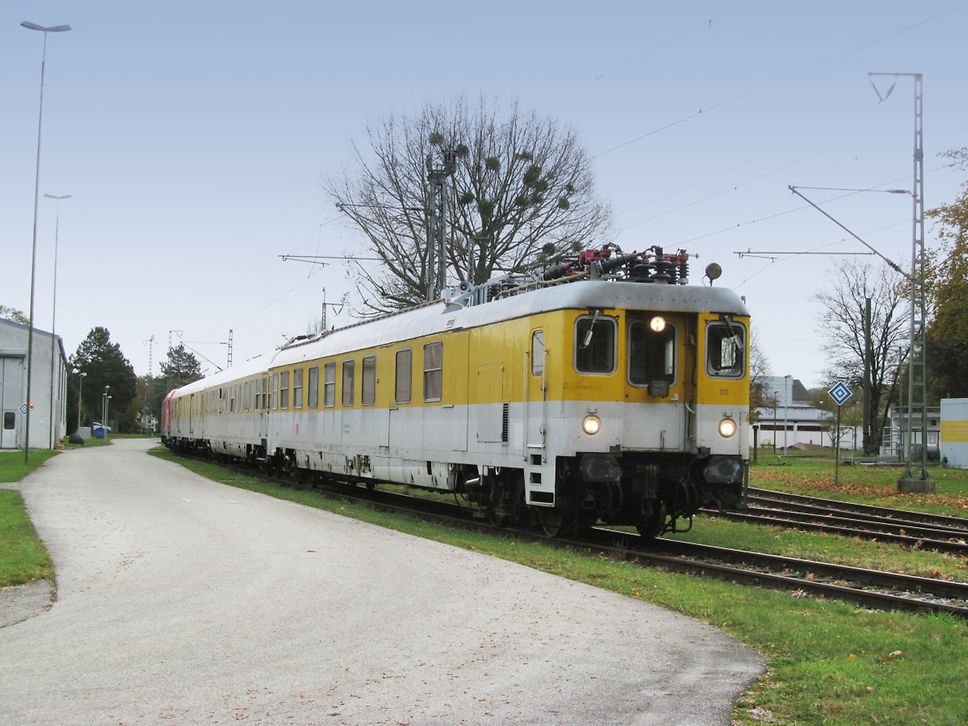Article: Acoustics and Vibration Testing laboratory
Outside noise, vibrations, speech intelligibility, etc.
As experts in the field of acoustics and vibrations,we can offer you a broad range of test and acceptance procedures:
- Testing of rail vehicles and components
- Testing of infrastructure (e.g. rail tracks, retarders)
- Testing of warning devices and noise sources
This, in turn, provides you with:
- A streamlined and cost-effective approval process for your operating resources
- The basis required to deploy your products and those of your customers quickly
- The peace of mind that your products comply with the environmental guidelines defined for noise and vibration
Accredited test procedures
- DB Systemtechnik is QMS certified to the ISO 9001 standard.
- Our test laboratory in Munich has been accredited by Deutsche Akkreditierungsstelle GmbH (DAkkS) in the area of technical acoustic and vibration measurements for railroading applications in accordance with DIN EN ISO/IEC 17025.
- The accreditation encompasses the relevant test procedures, e.g. in accordance with TSI regulations or DIN EN ISO 3095. See the appendix for the accreditation certificate. The detailed and latest list of activities/test procedures in the flexible scope of accreditation in the testing laboratory "Acoustics and Vibration Testing" can be found in this PDF (coming soon):
Our tests and test quantities
Details:
We can offer you a number of customised testing services for active railway operation:Vehicles
- Measurement of inside and outside noise of vehicles in accordance with DIN EN ISO 3095* and DIN EN ISO 3381*
- Measurement of acoustically relevant surface roughness of a wheel
- Full-scope technical noise approval measurements for rail vehicles in accordance with TSI NOI and TSI HGV RST*
- Determination of the sound power level of noise sources based on sound pressure measurements in accordance with DIN EN ISO 3744 and DIN EN ISO 3746*
- Measurement of audible warning devices for high-speed train horns in accordance with DIN EN 15153*
- Vibration measurements in track-bound vehicles*
- Measurement of the perceptibility of whistling signals and detonators in the driver's cabs of traction units in accordance with UIC 643 (approval: Italy, France)
- Speech intelligibility measurements on rail vehicles in accordance with DIN EN 60268-16
- Measurement of reverberation time in accordance with DIN EN ISO 3382 in rail vehicles
Infrastructure
- Measurement of acoustically relevant surface roughness of rail track in accordance with DIN EN 15610*
- Measurement of track decay rates in accordance with DIN EN 15461*
- Vibration measurements on rail lines in accordance with DIN 45672 and DIN 45669*
- Retarder emission measurements in marshalling yards in accordance with DB Directive Acoustics 35.3
- Speech intelligibility measurements in accordance with DIN EN 60268-16 in stations
Other test procedures
- Measurement of traffic noise in accordance with DIN 45642*
- Acoustic measurement of micro-pressure waves in the rail tunnels of high-speed lines (tunnel "bang" phenomenon)
- Testing of noise and vibration loads in the working areas of rail vehicles in accordance with EU Directive 2003/10/EC, noise accident prevention regulations and 2002/44/EC
*Accredited test procedure in accordance with DIN EN/IEC 17025:2005
Our special measuring vehicle
Noise measurement train

Measuring train to determine the acoustic rail running surface quality
train configuration |
|
|---|---|
Operation | Net of DB Netz AG and other railways within Europe. |
| Use |
|
Metrics |
|
| Gear |
|
| Quality: |
|